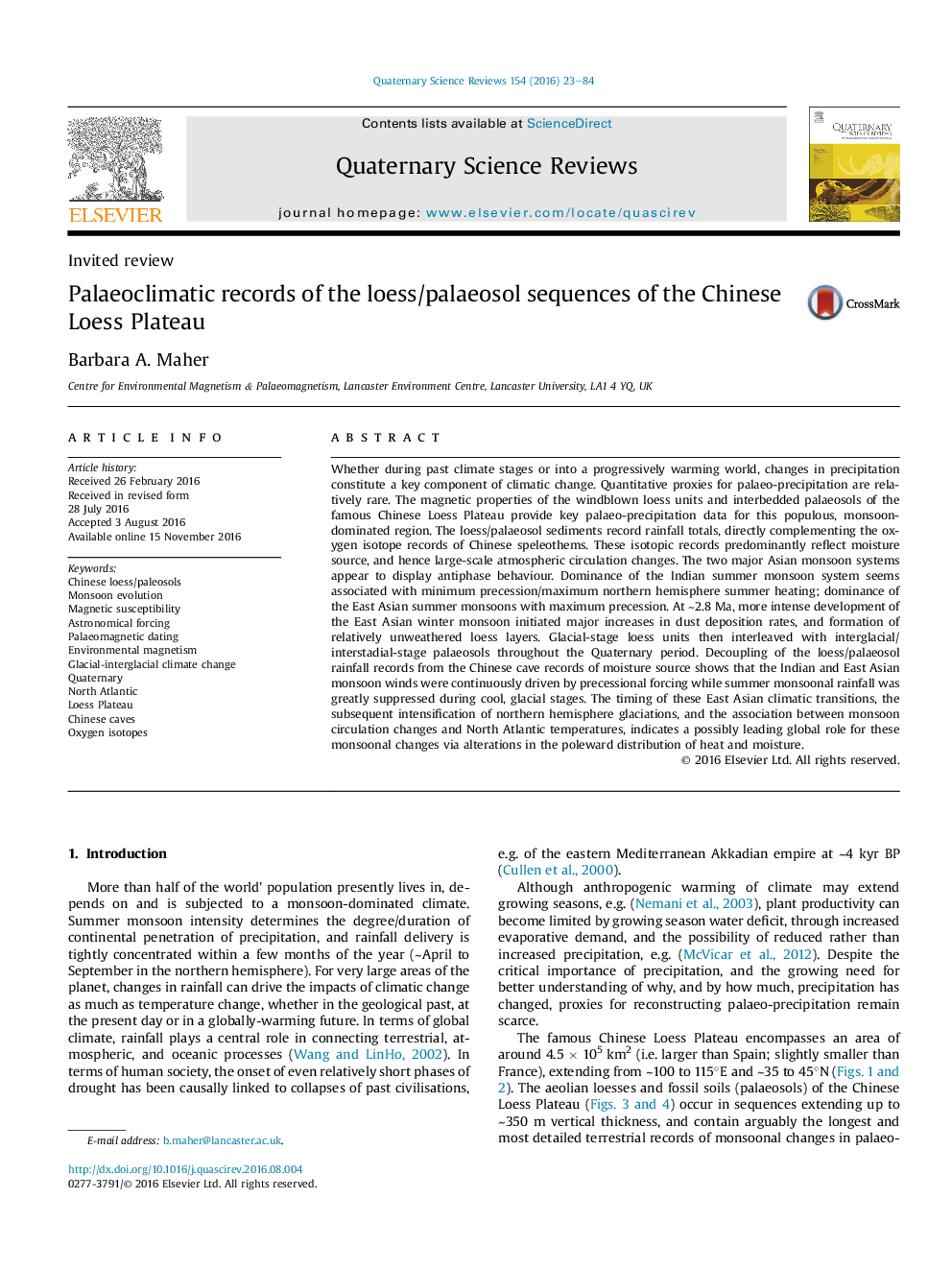| کد مقاله | کد نشریه | سال انتشار | مقاله انگلیسی | نسخه تمام متن |
|---|---|---|---|---|
| 6445352 | 1640781 | 2016 | 62 صفحه PDF | دانلود رایگان |
عنوان انگلیسی مقاله ISI
Palaeoclimatic records of the loess/palaeosol sequences of the Chinese Loess Plateau
ترجمه فارسی عنوان
سوابق پالئوسلیمتیک لس / پائئوسول توت فرنگی چین لس
دانلود مقاله + سفارش ترجمه
دانلود مقاله ISI انگلیسی
رایگان برای ایرانیان
کلمات کلیدی
چینی لس / پیلوستل، تکامل مونسون، قابلیت مغناطیسی، اعمال نجومی، قدمت پهلومغناطیس، مغناطیس محیط زیست، تغییر آب و هوای یخبندان، کواترنر، آتلانتیک شمالی، لس فلوت، غارهای چینی، ایزوتوپهای اکسیژن،
موضوعات مرتبط
مهندسی و علوم پایه
علوم زمین و سیارات
زمین شناسی
چکیده انگلیسی
Whether during past climate stages or into a progressively warming world, changes in precipitation constitute a key component of climatic change. Quantitative proxies for palaeo-precipitation are relatively rare. The magnetic properties of the windblown loess units and interbedded palaeosols of the famous Chinese Loess Plateau provide key palaeo-precipitation data for this populous, monsoon-dominated region. The loess/palaeosol sediments record rainfall totals, directly complementing the oxygen isotope records of Chinese speleothems. These isotopic records predominantly reflect moisture source, and hence large-scale atmospheric circulation changes. The two major Asian monsoon systems appear to display antiphase behaviour. Dominance of the Indian summer monsoon system seems associated with minimum precession/maximum northern hemisphere summer heating; dominance of the East Asian summer monsoons with maximum precession. At â¼2.8Â Ma, more intense development of the East Asian winter monsoon initiated major increases in dust deposition rates, and formation of relatively unweathered loess layers. Glacial-stage loess units then interleaved with interglacial/interstadial-stage palaeosols throughout the Quaternary period. Decoupling of the loess/palaeosol rainfall records from the Chinese cave records of moisture source shows that the Indian and East Asian monsoon winds were continuously driven by precessional forcing while summer monsoonal rainfall was greatly suppressed during cool, glacial stages. The timing of these East Asian climatic transitions, the subsequent intensification of northern hemisphere glaciations, and the association between monsoon circulation changes and North Atlantic temperatures, indicates a possibly leading global role for these monsoonal changes via alterations in the poleward distribution of heat and moisture.
ناشر
Database: Elsevier - ScienceDirect (ساینس دایرکت)
Journal: Quaternary Science Reviews - Volume 154, 15 December 2016, Pages 23-84
Journal: Quaternary Science Reviews - Volume 154, 15 December 2016, Pages 23-84
نویسندگان
Barbara A. Maher,
